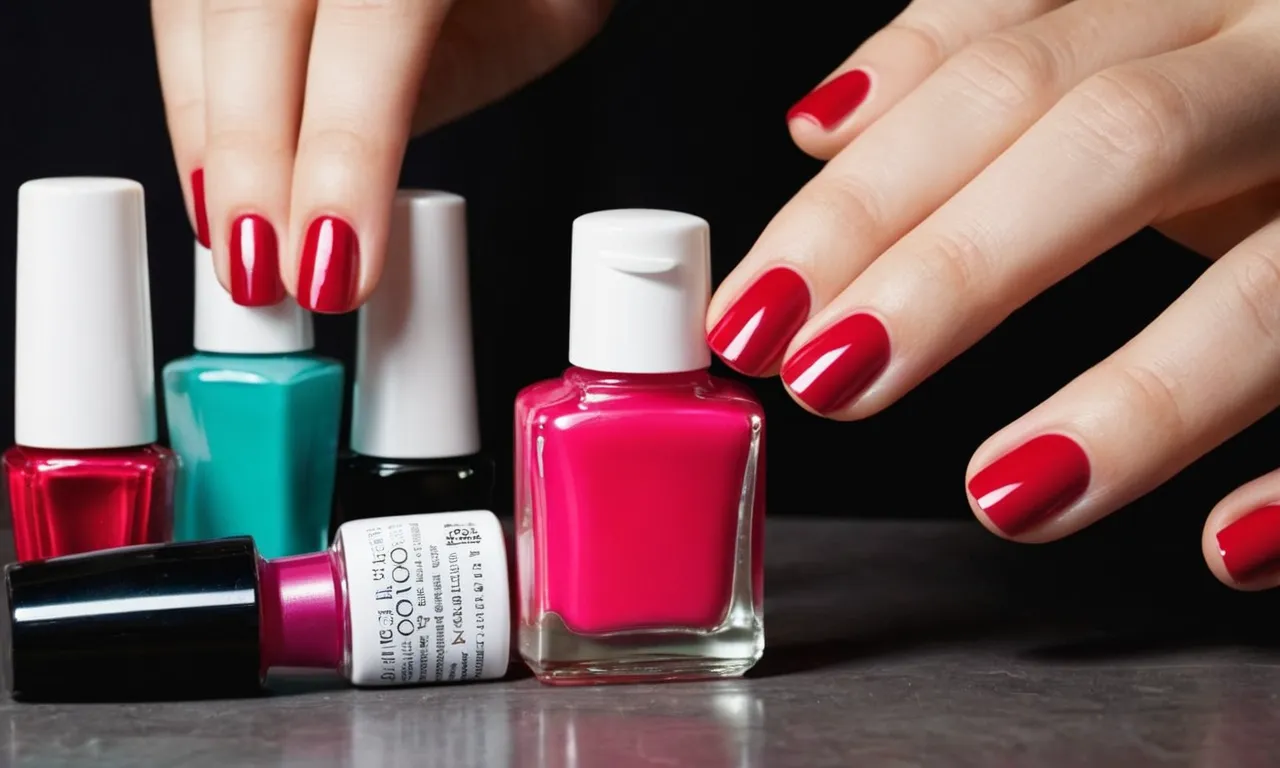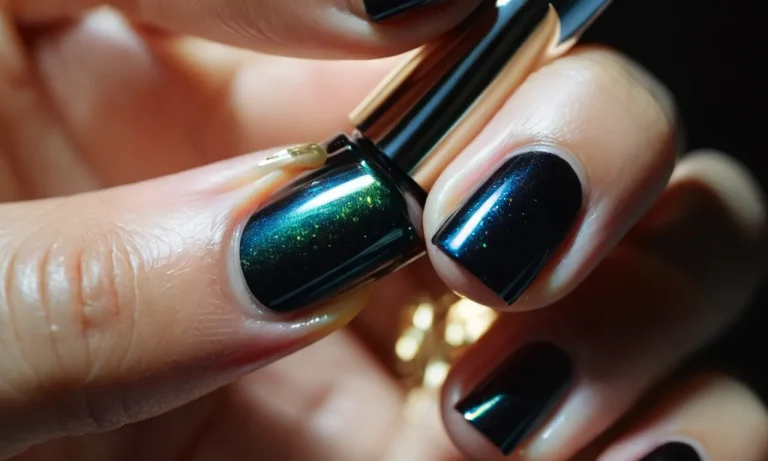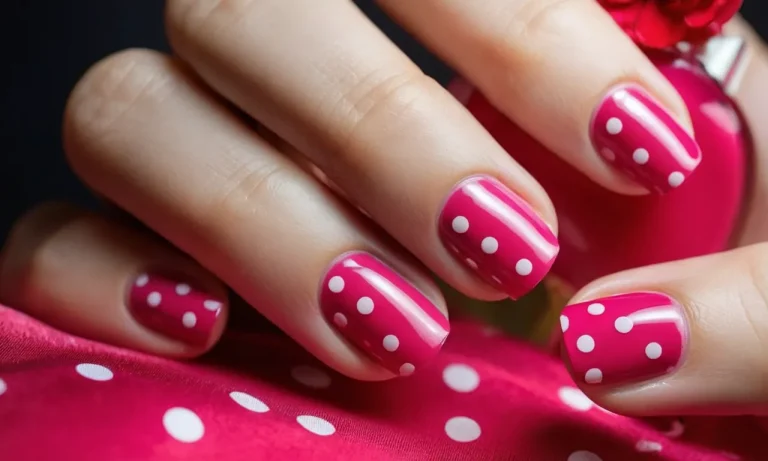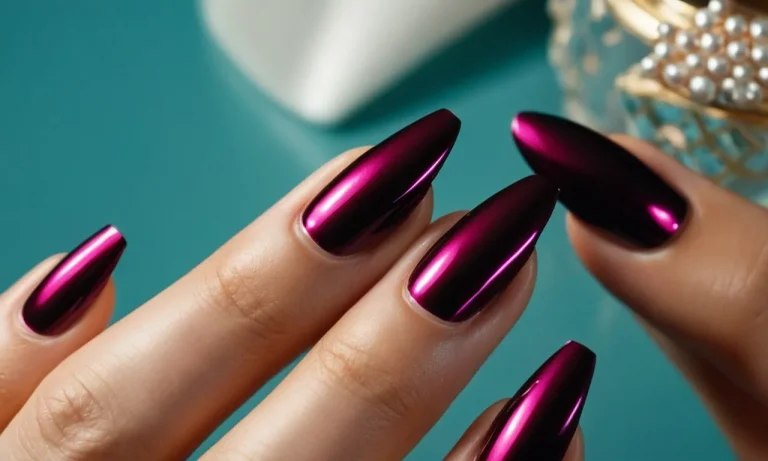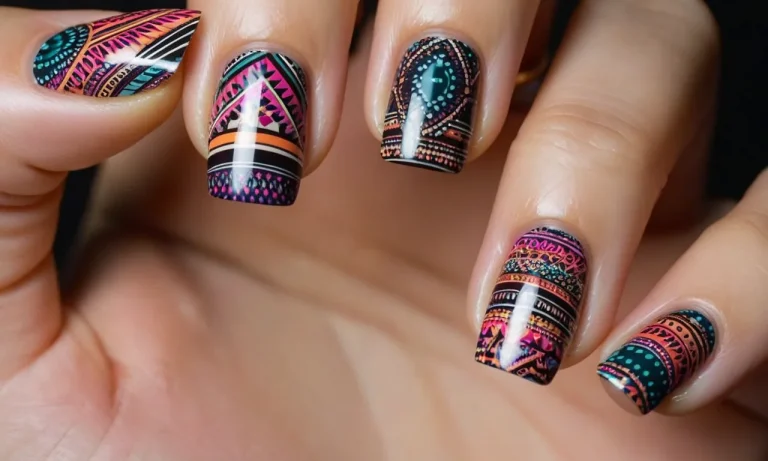How To Thin Nail Polish With Alcohol
If you’ve ever had a bottle of nail polish become too thick and goopy to use, you may have wondered if there’s a way to revive it. The good news is that yes, you can thin thick nail polish by adding alcohol!
If you’re short on time, here’s a quick answer to your question: you can add a small amount of nail polish thinner or 91% isopropyl alcohol to your thickened nail polish to thin it back out. Gently roll the bottle between your hands to mix it up.
Test it on a spare nail first before painting your nails.
In this comprehensive guide, we’ll go over everything you need to know about thinning nail polish with alcohol. You’ll learn why nail polish thickens over time, what types of alcohol work best, step-by-step instructions, tips to prevent polish from thickening again, and answers to frequently asked questions.
Why Nail Polish Thickens Over Time
Oxidation
Nail polish contains solvents that help keep the color smooth and fluid in the bottle. Over time, these solvents evaporate, causing the polish to thicken. Oxygen in the air interacts with the remaining ingredients, triggering oxidation.
This chemical reaction continues changing the nail polish’s texture and formula over the months.
Oxidation makes nail polish dry out and get thicker in the bottle. It causes the color to darken and take on a cloudy, syrup-like consistency. Shaking the bottle will temporarily make it smoother again, but the thickening will continue as oxidation progresses.
Old or expired nail polish becomes too goopy and difficult to apply nicely.
Evaporation
Another reason nail polish thickens is that the volatile solvents evaporate out of the bottle over time. These ingredients like ethyl acetate, butyl acetate, and isopropyl alcohol keep the polish fluid and enable it to flow onto the nails smoothly.
As the months go by, evaporation diminishes the amounts of these solvents. With less of the thin, quick-drying ingredients, the nail polish formula becomes more viscous. The remaining pigments and resins make up a greater concentration, increasing the thickness.
Frequent opening and closing also accelerates evaporation. Exposure to air allows more of the volatile solvents to escape each time. Storing nail polish in a cool, dark place helps slow this down.
What You’ll Need
Nail polish thinner or 91% isopropyl alcohol
The key ingredient for thinning nail polish is a solvent, which helps break down the polish and make it more fluid. The two best options are:
- Nail polish thinner – This is specifically designed for diluting polishes. It contains solvents like butyl acetate and ethyl acetate to dissolve the pigments and resins in polish.
- 91% isopropyl alcohol – You can use rubbing alcohol as a DIY alternative if you don’t have thinner on hand. The 91% concentration works best.
Avoid using acetone nail polish remover as a thinner, as it can dry out nail polishes. Stick to a product designed for diluting and extending the life of polishes.
An old nail polish bottle
You’ll need an empty bottle to mix the polish and thinning agent together. Recycling an old nail polish container you’ve finished works perfectly.
Make sure to clean it out well first with a bit of acetone remover to get rid of any polish residue. This prevents the old color or glitter from messing up the new thinner mixture.
You can use either a glass or plastic bottle. Glass tends to be more durable over time. If using plastic, opt for a higher quality bottle to avoid any issues with chemical reactions between the bottle and thinners.
The size of the bottle depends on how much polish you want to thin out. Something around 0.5 oz or 15 ml gives you room to work.
Step-by-Step Instructions
Add a few drops of alcohol
Start by adding 2-3 drops of rubbing alcohol into your bottle of nail polish. The best alcohols to use are isopropyl or ethyl as they will thin the polish effectively. Insert the brush into the bottle and stir gently to incorporate the alcohol.
Roll the bottle
After adding the alcohol, tightly close the nail polish bottle and roll it between your hands for 30 seconds. This helps blend the alcohol with the polish. Be careful not to shake the bottle as this can cause bubbles.
Test on one nail
Before applying the thinned nail polish to all your nails, do a test on one nail first. Brush a thin layer onto one nail and allow it to dry completely. Check for the texture, brush strokes, and application. If you are happy with the results, move on to coating the rest of the nails.
Apply to nails
When ready to apply, gently roll the nail polish bottle between your palms to mix the contents again. Paint each nail with smooth, thin strokes and allow adequate drying time between coats. Remember to cap the bottle tightly after each use.
The alcohol will slowly evaporate so you may need to add more after a few uses.
Tips for Preventing Thickening
Store nail polish correctly
One of the main reasons nail polish can thicken over time is improper storage. Nail polish contains solvents that can evaporate when exposed to air, causing the formula to thicken. To prevent this, always store nail polish in a cool, dry place away from direct sunlight.
Keeping polishes in the refrigerator is ideal, as this slows down solvent evaporation. Storing bottles upside down can also help keep the brush saturated with polish.
Use a quick-dry topcoat
Applying a fast-drying topcoat over nail polish creates a protective barrier that prevents exposure to air. This helps lock in the solvents and keeps the underlying color from getting thick. Using a topcoat like Seche Vite or Essie Good To Go after each manicure can extend the life of your polish by preventing early thickening.
Don’t leave bottles open
Leaving nail polish bottles open allows the solvents to interact with oxygen, accelerating thickening. Always securely cap each bottle immediately after every use. If you regularly do your nails at home, invest in spare caps or bottle stoppers to avoid leaving polishes open for extended periods.
An opened bottle left uncapped overnight can already start to thicken.
Following proper nail polish storage habits like refrigeration, keeping bottles upside down, and capping tightly after use can go a long way in preventing premature thickening. Using a quick-dry topcoat creates an extra barrier against air exposure.
With some care, you can enjoy most nail polishes for up to 2 years before needing to thin them out again.
FAQs
How much alcohol should I add?
When thinning nail polish with alcohol, it’s generally recommended to add small amounts at a time, such as 1⁄4 teaspoon, to reach the desired consistency. Slowly incorporate the alcohol and test the consistency on a spare nail tip or piece of paper until optimal fluidity is achieved.
Most experts advise adding no more than a couple teaspoons of alcohol total to a standard 0.5oz (15ml) bottle of nail polish.
Does acetone work to thin polish?
While acetone can be used to fully remove nail polish, it is too harsh and drying to properly thin lacquer. Using a few drops of isopropyl alcohol, sometimes referred to as rubbing alcohol, is preferred to gently thin nail polish.
Acetone quickly breaks down the mica and color pigments, whereas alcohol thins the lacquer base while keeping the rich color intact.
What about water or remover?
Water and commercial nail polish removers are not effective options for thinning thick lacquer. Water is incompatible with the lacquer ingredients and can cause polish to coagulate or get stringy rather than smooth out.
Standard nail polish remover contains acetone, which is too aggressive as a thinner, quickly destroying polish components as mentioned.
Can I thin gel polish this way?
No, you cannot thin UV or LED gel polishes with isopropyl alcohol or acetone. The chemistry of these polymer gels is very different than standard lacquers. Adding any thinner to gel polish interrupts the crucial bonding process that allows them to properly cure under LED lamps.
Thinning is not necessary for gel manicures anyway since the thickness and self-leveling formulas allow for smooth application.
When adding alcohol as a DIY nail polish thinner, carefully add 1⁄4 teaspoon at a time, test the flow before adding more, and use pure isopropyl alcohol rather than acetone or products containing extra additives. With this proper dilution, you can revive thickened bottles of regular lacquer.
For more nail care tips, visit ExpertHomeTips.com.
Conclusion
If your favorite nail polish has gotten too thick to use comfortably, don’t despair. With some alcohol and a bit of shaking, you can bring it back to a smooth, easy-to-apply consistency. Always test the revived polish on one nail first before painting all ten.
Follow the tips to keep your manicures looking flawless and prevent polishes from thickening prematurely. Happy painting!

